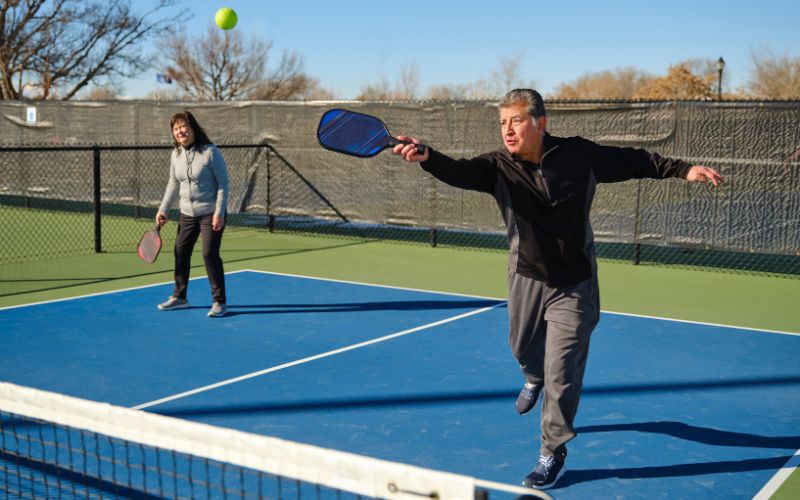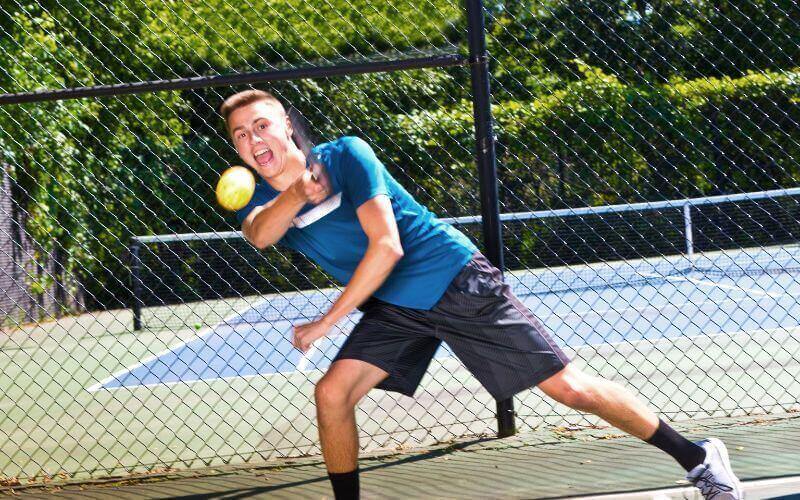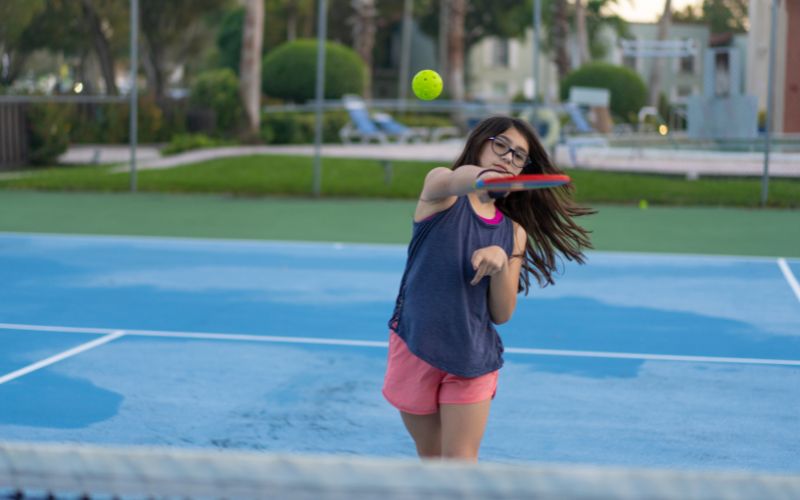Pickleball, a game that combines elements of tennis, badminton, and table tennis, has gained immense popularity in recent years. It’s a sport that’s not only fun and engaging but also requires precision, strategy, and adherence to specific rules. Among these rules, pickleball return of serve rules stand out as crucial guidelines that players must understand and follow. In this comprehensive guide, we delve into the intricacies of pickleball return of serve rules, exploring the nuances that govern this critical aspect of the game.
Understanding the Basics
Pickleball is typically played in doubles format, with two players on each team. The game begins with a serve, where one member of the serving team strikes the ball diagonally cross-court to the opposing team’s service court. The serving team must ensure that the serve is executed within the designated boundaries of the service court.
The Serve and Its Importance
The serve initiates each rally in pickleball and provides the serving team with the opportunity to gain an advantage right from the start. However, in pickleball, unlike tennis, players do not have multiple serve attempts. Only one serve attempt is permitted per player, emphasizing the importance of accuracy and consistency in serving.
The Double Bounce Rule
One of the fundamental pickleball rules is the double bounce rule. According to this rule, the ball must bounce once on each side of the net at the beginning of each point. This means that the serving team’s serve must land and bounce once in the opposing team’s court, and the return serve must also bounce once before the serving team can hit it.
Return of Serve Dynamics
The return of serve is a pivotal moment in a pickleball match. It sets the tone for the rally that follows and can determine the flow of gameplay. When returning the serve, the opposing team aims to return the ball in a way that places pressure on the serving team while adhering to the rules and regulations of the game.
Non-Volley Zone Considerations
One of the critical aspects of the pickleball return of serve rules is the non-volley zone. Also known as the kitchen, this area near the net prohibits players from hitting volleys (striking the ball in the air before it bounces). When returning a serve, players must be mindful of their position relative to the non-volley zone line to avoid rule violations.
5 Tips for a Successful Pickleball Return of Serve
Returning a serve effectively in pickleball is pivotal to gaining control of the rally and ultimately securing points for your team. Mastering the art of the return of serve requires not only technique but also strategic positioning and awareness of the game dynamics. Here are five tips to help you improve your pickleball return of serve game:
1. Position Yourself Strategically
One of the most common mistakes players make when returning serve is standing too close to the baseline. To execute a successful return, position yourself approximately 2-3 feet behind the baseline. This positioning allows you to transfer your weight forward as you strike the ball, enabling better control and power in your return shot.
2. Return and Advance
After making your return, don’t stay stagnant. Take advantage of the opportunity to advance to the non-volley line. By reaching the non-volley line quickly, you gain a positional advantage over the serving team, increasing your chances of winning the rally. Remember to anticipate your opponents’ next shot and adjust your positioning accordingly.
3. Control the Pace of Your Return
Instead of focusing solely on power, consider slowing down your return of serve to give yourself more time to reach the non-volley line. A softer, more controlled shot allows for smoother transition through the transition zone, making it easier to position yourself effectively for the next shot. Experiment with different speeds and trajectories to find what works best for you.
4. Utilize Slicing Techniques
Adding spin to your return of serve can add complexity to your opponent’s response. Consider incorporating slices into your returns to keep the ball low and difficult to handle. A well-executed slice can force your opponents to hit up on the ball, increasing the likelihood of a weak return that you can capitalize on.
5. Aim for Depth and Accuracy
When returning serve, prioritize hitting the ball deep and to the center of the court. A deep return forces the serving team to hit a more challenging shot and keeps them away from the non-volley line. Additionally, aiming for the center minimizes potential errors and confusion between the serving team members, increasing your chances of gaining the upper hand in the rally.
Serve Placement and Strategy
In pickleball, strategic serve placement can significantly influence the outcome of a point. Players often aim to serve deep into their opponents’ court, forcing them to hit difficult shots or return the ball with less control. By executing well-placed serves, the serving team can gain a strategic advantage and put pressure on the opposing team right from the start.
Adhering to Court Boundaries
Ensuring that the serve lands within the correct service court is essential to avoid rule violations. Players must pay close attention to the associated lines and boundaries of the court to ensure that their serves are legal and in play. Any serve that lands outside the designated boundaries results in a fault and a point for the opposing team.
Serve and Volley Strategies
In pickleball, the serve and volley strategy can be effective in putting pressure on the opposing team. By following up a strong serve with a quick transition to the net, players can capitalize on their momentum and aggressively attack the return of serve. However, players must be cautious not to violate the double bounce rule when employing this strategy.
Rule Enforcement and Fair Play
Pickleball, like any sport, relies on rule enforcement to maintain fairness and integrity. Players are expected to familiarize themselves with the rules and abide by them throughout the course of the game. Line calls and rule interpretations should be made in good faith, with the primary goal of ensuring a fair and enjoyable playing experience for all participants.
Handling Rule Violations
In the event of a rule violation, such as a fault serve or stepping into the non-volley zone during a volley, the opposing team is awarded the point. It’s essential for players to acknowledge and accept rule infractions gracefully, understanding that adherence to the rules is paramount in pickleball.
The return of serve is a critical aspect of pickleball that requires skill, strategy, and adherence to specific rules. By understanding and applying the pickleball return of serve rules, players can elevate their gameplay and enjoy a more rewarding experience on the court. Whether serving or returning, mastering the intricacies of pickleball rules enhances not only individual performance but also the overall quality of play for everyone involved. As players continue to hone their skills and deepen their understanding of the game, pickleball remains a dynamic and engaging sport for enthusiasts of all levels.
Return of Serve FAQ’s
To clarify common queries about the return of serve, here are some frequently asked questions:
Can the return of serve land in the kitchen?
Yes, the return of serve can legally land in the kitchen, but strategically, it’s preferable to aim for a deep return to maintain court control.
Does the return of serve have to bounce?
Yes, according to the double-bounce rule, the return of serve must bounce once on each side before being hit out of the air.
Can either player return the serve?
No, the correct server must serve from the correct service court, and the correct receiver must receive the serve, as per the official rules.





